Screen Time
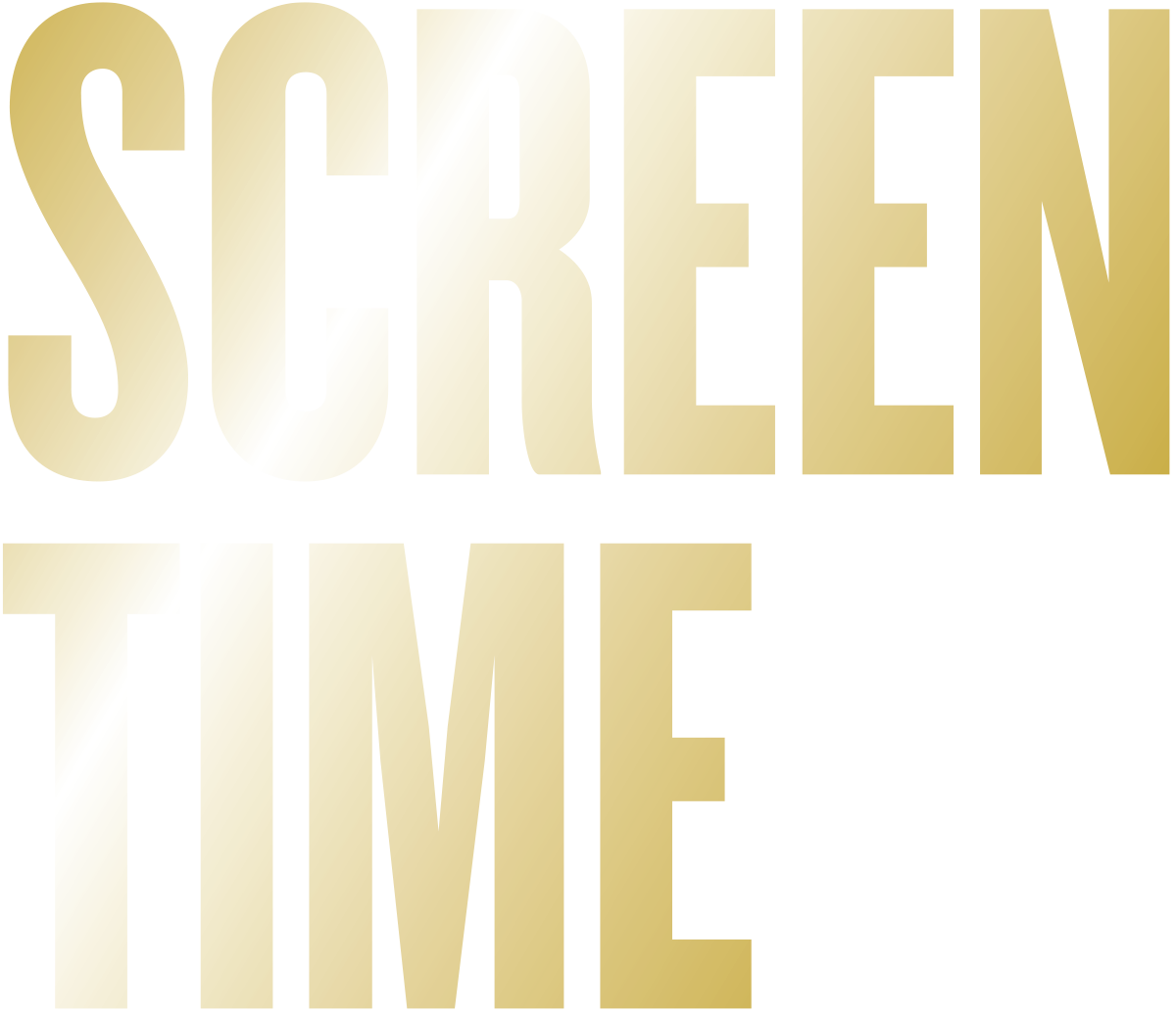
The Next Big Break:
Grace Dumdaw ’21
“I might have just one line, but I need to nail this,” the fledgling actor told herself. The role was small; she would be playing an assistant in a party scene. She reviewed past episodes while drawing on her knowledge of the HBO series. Then she propped her camera on her dresser and did take after take until her audition tape was just right.
Dumdaw won the part — and with it, a confidence boost.
“That was the moment I realized I should treat every audition like a Succession episode,” she says. “When I put my mind to it, I can get a role.”
Just a year out from graduation, Dumdaw is in the early phase of her professional acting journey, holding down a full-time job as a photo editor for the SYFY network while auditioning for parts from her New York apartment.
With each audition tape comes the hope of her big break:
“As long as I’m acting,” she says, “I’ll be happy.”
Dumdaw caught the acting bug at Swarthmore, where she designed her own major — stage, screen, and new media — combining courses from Film & Media Studies and the Theater Department.
That helps her in front of the camera, she says, enabling her to perform like a stage or screen actor while understanding the perspective of a film director. An Evans Scholarship at Swarthmore also set her up for success.
In addition to providing funding for acting and voiceover lessons, the scholarship allowed Dumdaw to purchase her own camera equipment — a necessity since the pandemic all but ended in-person auditions.
The grind is a challenge, but it’s beginning to pay off: Just this year, Dumdaw has had small roles on the shows New Amsterdam and Gossip Girl, and she’s appearing in her first film — a Netflix Christmas movie.

With the talent coming out of Film & Media Studies, she says, it’s only a matter of time before her credits overlap with a fellow Swattie.
“I have this weird fantasy where I’ll be on set and someone will be like, ‘Oh, you went to Swarthmore?
Me, too!’” she says. “It has yet to happen, but I feel like it’s getting close.”
—ELIZABETH SLOCUM
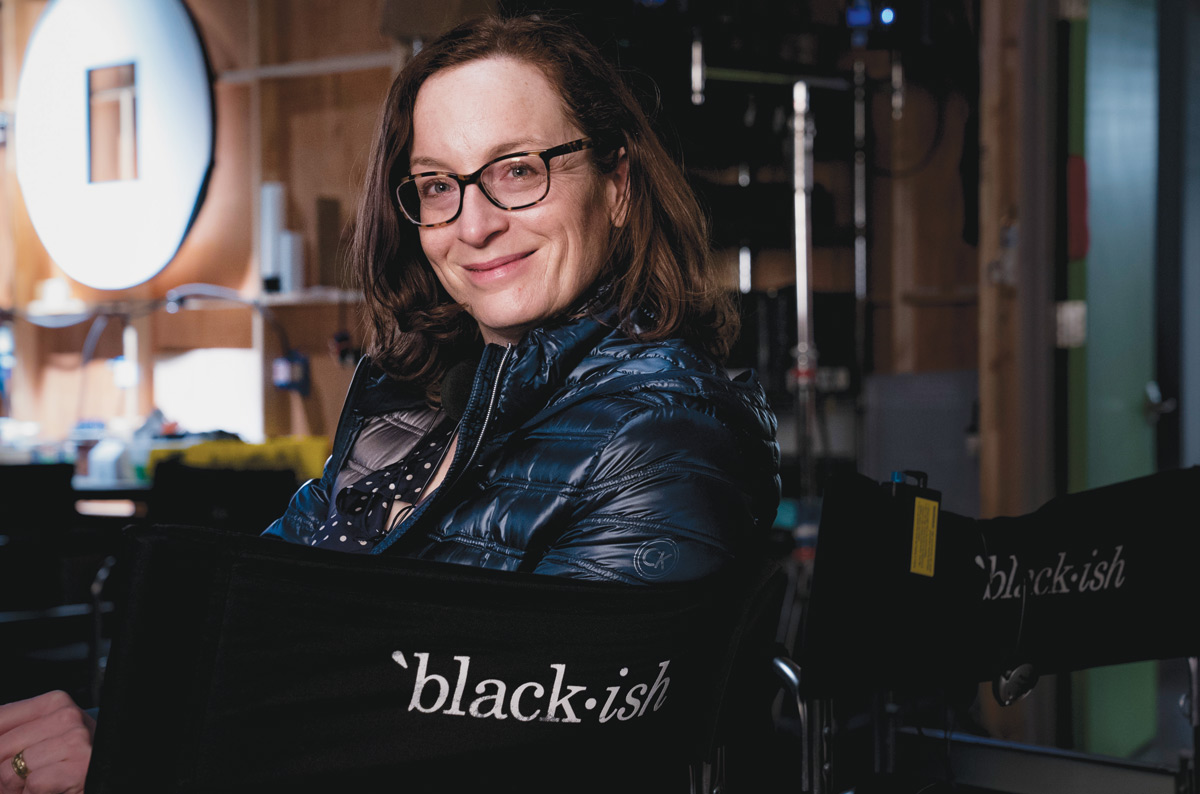
A Light in Darkness:
Gail Lerner ’92
As the youngest child in a “family with secrets and depression,” she told jokes so she could stay up past her bedtime, and she, like many comedy writers, honed her comedy not just to make people laugh, but also to deflect negativity.
At Swarthmore, she co-founded the improv group Vertigo-go to have a creative outlet during times of pressure and stress.
The greatest challenge for Lerner and her husband Colin Campbell, a writer and professor, came in June 2019 with the tragic deaths of their 17-year-old daughter Ruby and 14-year-old son Hart in a crash caused by a drunk driver.
Even then, humor provided a small light in the dark, a reminder that grief, pain, and rage weren’t the only things they would be feeling for the rest of their lives.
“In those early days, gallows humor got us through,” says Lerner. “Thankfully, my husband shares a similar sensibility; if he didn’t want to talk about grief, or feel comfortable with that kind of bleak absurdity, the very notion of surviving this tragedy would be unthinkable to me.”
The day of the crash, Lerner had handed in her director’s draft of the Cheaper by the Dozen remake she was set to direct as her feature-film debut for Disney+. Co-wrritten by black-ish creator Kenya Barris and Jenifer Rice Genzuk Henry, the film stars Zach Braff and Gabrielle Union as parents bringing up a multiracial, blended family of 10 kids. Two years passed as Lerner took time to grieve and the pandemic halted Hollywood productions; when it was finally time to start shooting, she wasn’t nervous about working with so many children; on the contrary, she relished it.
“I was really fueled by everything I love about being a mom,” she says of the film, which premiered on March 18. “It all came from my desire to create and be part of a fun, loving family. An ideal film set is like a family to begin with and when you’re telling a family story, it’s even more so.”
Lerner and Campbell are currently in the process of adopting a 14-year-old girl, with whom they bonded over a shared sense of humor, optimism, and resilience in the face of trauma.
And though loss has upended her life in innumerable ways, Lerner wants the world to know that suffering is not the only thing that defines her and other trauma survivors.
“Please remember that in addition to our pain and fragility, we’re still the resilient, idiosyncratic people we once were,” she wrote in a letter to the New Yorker. “After all, we’re doing everything you’re doing: living, writing, loving our families. And we’re doing it backwards, in high heels, on the edge of an abyss.”
— ROY GREIM ’14

swatties Shine on



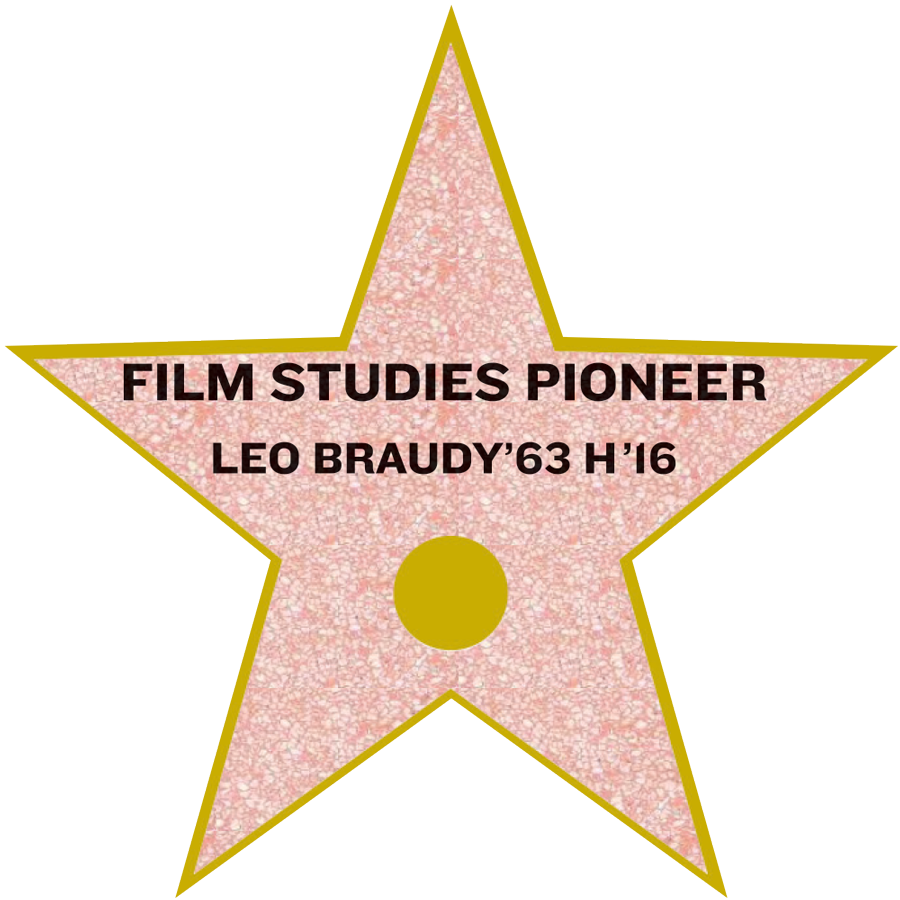
FILM STUDIES PIONEER
LEO BRAUDY’63 H’16
“It was an emotional connection to an art form,” he says. “The movies as storytelling were a kind of nurturing thing.”
Braudy’s fascination with films stayed with him into his Columbia University teaching job starting in the late 1960s. He taught film, part of the curricula in several classes, but not an area of study on its own. Columbia had a film department with a graduate program, but no Ph.D. Braudy with his Ph.D. was instrumental in persuading university officials to commit to an upper-level program. During the 1970s, he was on the founding faculty of the nascent summer-school film program at the University of California at Santa Barbara.
Braudy is among pioneers who helped establish film studies as an academic discipline. For 30 years, he has co-edited an anthology on film theory and criticism that is widely used in film-studies classes. He helped to create film courses in what he described then as an “unstructured movement.” Today, film-studies programs from bachelor’s to the Ph.D. level that teach the history, theory and criticism of motion pictures are abundant in colleges and universities.
A film critic and cultural historian, he is a professor and holder of the Leo Bing Chair in English and American Literature at the University of Southern California. Though still on the faculty, he no longer teaches. He has written 10 books and co-edited eight. He is researching a new book on the effects of the execution of Charles I, the 17th-century king of England.
Braudy is an eclectic researcher and writer. His subjects and books range from fame to the Hollywood sign to the history of horror to growing up in the 1950s. At USC, he taught film criticism alongside 17th- and 18th-century English literature and history. One seemingly has little to do with the other, but for Braudy, they were connected by one essential element.
“These were two things I was interested in,” says Braudy, who received an honorary Doctor of Humane Letters degree from Swarthmore in 2016. “The connections were in me, whatever they might be.” Among his favorite movies are On the Waterfront (he wrote a book about it in, 2005), The Magnificent Seven, and Francois Truffaut’s Shoot the Piano Player (he compiled an anthology about it in 1972). A contemporary favorite is the 2022 HBO Max thriller Kimi, which takes place during the pandemic but deals with technology, not the virus.
His 2016 book Haunted looks at horror and the underlying fear of the unknown. He doesn’t expect Hollywood to produce many movies about the fear engendered by the COVID pandemic. The virus isn’t easily translated to movies, he says, because it is not a tangible villain like James Bond’s Goldfinger and others “who were very specific people who were trying to do bad things.”
Zombie movies are the closest embodiment to what we’re facing now, Braudy says. “The zombies are these unidentifiable hordes that are after us. That’s the kind of fear you can translate into anything, fear of China, Republicans fearing Democrats, Democrats fearing Republicans, this group that’s going to swallow us up.” He has no interest in writing a movie, but has acted in a few. In 1970, he had a supporting role in Ice, written and directed by Robert Kramer ’61, and a small role in John Waters’ Polyester in 1981. At Swarthmore, Hansberry, who wrote A Raisin in the Sun, selected Braudy’s play for production. Titled The Wind That Blows Through Vacant Rooms, it centered on “theatricality versus reality,” he recalls. “It embarrasses me to talk about it.”
Braudy’s lasting influence in film includes his work in the anthology Film Theory & Criticism, which has undergone eight editions, and his book The World in a Frame: What We See in Films, still in print. “That’s something I’m proud of,” he says. “I wrote it almost 50 years ago, and people are still interested in reading it.”
—SHERRY L. HOWARD

Prime Time for People of Color:
Brandy Monk-Payton ’07
“It’s a prime time for people of color to write and produce shows that relate to them,” Monk-Payton says. “There are so many avenues for creating content on a low budget. A lot of network executives on these broadcast and cable and streaming [platforms] are looking for talent, for these new voices to appeal to these audiences that really want diverse and inclusive programming. That’s a great turning point.”
Monk-Payton has always been intrigued by the representation of Black people on television, film and other media. Part of her interest was sparked at Swarthmore in Professor Patricia White’s film classes.
A media and Black cultural studies scholar, Monk-Payton is an assistant professor of communications and media studies at Fordham University.
Her research has made her an expert, speaking last year on PBS NewsHour about the anniversary of the 1921 Tulsa Race Massacre and how HBO’s Lovecraft and Watchmen introduced viewers to this shocking history a year or more before it was commemorated in 2021.
She loves watching television, but also analyzing it.
A fan of The Bachelor for its drama and its fantasy view of romance, Monk-Payton likes what it says about societal views on dating and love. She was tapped by NPR to talk about a controversy surrounding photos of a white female contestant dressed in a plantation-style costume that led to an apology and removal of the show’s host.
Monk-Payton cites the ABC show Scandal as an influence on her research on Black representation. The show, along with BET’s Being Mary Jane, defied stereotypes by offering strong, complex Black female characters.
“Seeing these Black women in dynamic roles really spoke to me in terms of what Black representation could be on television,” she says. Both shows — which aired in the mid-2010s — were created by Black women, Shonda Rhimes and Mara Brock Akil.
The drawback with Scandal, Monk-Payton says, was the same that plagued the NBC series Julia with Diahann Carroll more than 50 years ago: its inability to incorporate the character’s race into the storyline. Having Black people on TV is positive, she says, but it’s even more important that race and the Black experience are woven into the characters’ lives.
“There was a lot of debate around Julia as a character and the erasure of her race in that story,” she says. “I think we have to be careful as we see more Black faces in front of the camera, what are they actually saying, what is the story, what are the character motivations and how is that appealing to Black identity.”
Such shows as Issa Rae’s YouTube sensation Awkward Black Girl and her HBO comedy Insecure, and Donald Glover’s Atlanta, focus on different segments of Black life. These creators and other “Black millennial media-makers” are taking streaming platforms and networks by storm, Monk-Payton notes, picking up awards and building media empires. One of Monk-Payton’s longtime interests is Black celebrities and stardom. “We put a lot of pressure on particular icons,” she says of Black fans. “They have to exist in this system where they have to appeal to a multicultural society, but still reflect some sense of their Blackness.”
— SHERRY L. HOWARD
Living the Dream:
Michael Weithorn ’78
“I like to think I was Swarthmore’s first Film & Media Studies major,” he says, “even though the department didn’t exist.”
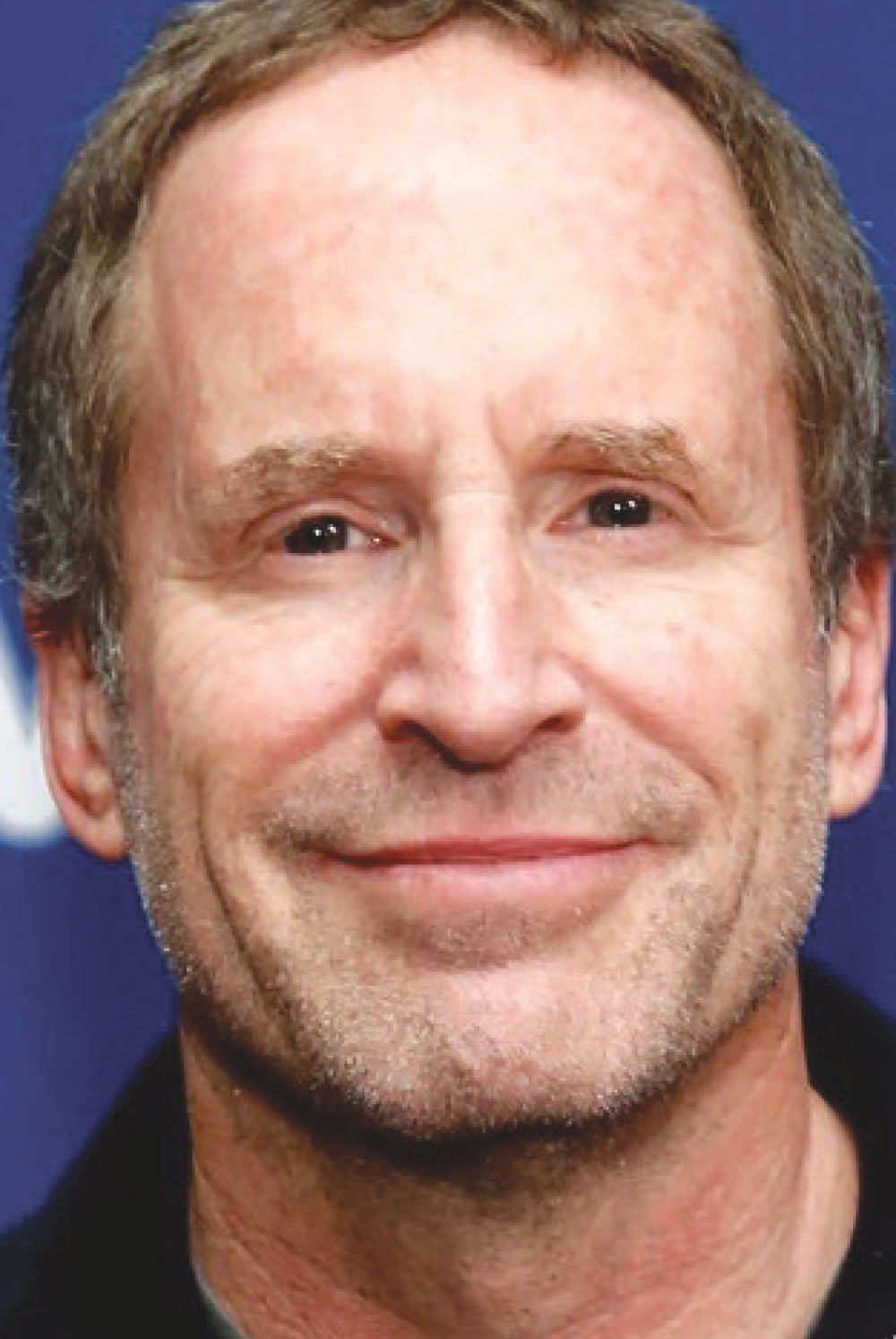
Weithorn’s first big break came on Family Ties. “Writing prime-time comedy was my dream, and it was surreal to finally get there.”
Although the give-and-take of a good writers room can produce material that no one person could come up with on their own, Weithorn says, “Usually the soul of a script — the nuances and flow of the dialogue — is the product of one writer hearing the voices in their head and putting them on the page. It was thrilling to write my own experiences and sensibilities into the character of Alex Keaton every week and watch Michael J. Fox soar with the material.”
Though the pandemic has been tough, Weithorn has several current projects he believes in and hopes the entertainment industry will come to realize a truth he sees as self-evident.

“College-educated people over 50 are a hugely underserved audience,” he says.
The College’s Film & Media studies pioneer has another trailblazing idea for liberal arts education. Students should receive academic credit for the time, hard work, and real-life learning that go into playing a sport, Weithorn says.
“I would love to see Swarthmore be the first school and lead the way for others!”
— TARA SMITH

Independent Heart:
Sandra Schulberg ’71
She studied linguistics at Swarthmore, then made her way into TV and film.
“I could have gone to work at one of the studios,” she says, “but I was raised in a family that always rooted for the underdog, so I was drawn to ‘off-Hollywood’ movies.” She produced and financed independent films for three decades, founded the Independent Filmmaker Project (now Film Independent in Los Angeles and the Gotham Film & Media Institute in New York), and heads IndieCollect, a nonprofit that rescues, restores, and reactivates independent films. It was her father’s 1948 film about the first Nuremberg trial that sparked her interest in restoration.
“Once I learned the film had been suppressed in the U.S., I became determined to restore and release it,” says Schulberg. Nuremberg: Its Lesson for Today (The Schulberg / Waletzky Restoration) finally showed in American theaters in 2010. Inspired, she founded IndieCollect to rescue other independent films.
Film labs closed en masse during the transition to digital, and many dumped their stash of negatives or sold them to private collectors. Prints that toured theaters got worn out and discarded.
IndieCollect helps filmmakers trace their films and places them at participating archives. The company’s restorations highlight the diversity of American independent cinema, with a special emphasis on saving films by women directors and those who identify as African American, Asian American, Latinx and LGBTQ+. “Studios value and invest in restoration of their assets,” she says. “Indie films are orphans and are generally not considered commercially viable. But at IndieCollect we consider them culturally, historically, and artistically priceless, and bringing these long-unseen films to new audiences is fundamental to our mandate.”
Cane River by Horace Jenkins had been buried for 36 years. When it was restored and released in 2018, it “changed the canon of Black cinema,” according to the New York Times.
Schulberg, who turned in her thesis 36 years late, is technically Swarthmore Class of 2008.
“I did want to finish that assignment,” she says. Now she’s on to a new one: digging through the vault of the WRS film lab in Pittsburgh, which contains 70,000 cans of film. Untold stories are waiting.
— HEATHER RIGNEY SHUMAKER ’91
Learn more about indiecollect: indiecollect.org
Taking it in Stride:
Mike Nilon ’89
“I will never get over it, ever,” says Nilon, a talent manager, producer, and owner of Stride Management in Los Angeles. “When you start in the entertainment business, you should have a sense of wonder. And you can’t lose that, even as you have some wear on your tires.”

It’s a lot to juggle, but Nilon recognizes how lucky he is to play a role in American culture.
“Everybody has a movie or TV show or play that really means a lot to them,” he says. An English literature major at Swarthmore with a show on the student station WSRN, Nilon thought he’d pursue a career in radio.
But after a stop in Anchorage, Alaska, as a TV sportscaster, and attending Syracuse University to study radio, TV, and film, Nilon headed to Hollywood for a mailroom job at Creative Artists Agency. The post taught him the ropes and how to make connections within the industry.
As he sought something more producorial and creative, Nilon made the leap to talent management, joining a firm as a partner before launching a company of his own. In just four years, Stride Management has grown to a staff of 12 working with 200 clients.
The move allowed Nilon to flex his creative muscle as a producer. One recent film is a meta comedy starring Cage, The Unbearable Weight of Massive Talent.
With each step in his career, Nilon has carried with him a weight of his own: to be a representative of the ideals that were instilled in him at Swarthmore.
“For me to have an opportunity to have a career here,” he says, “I just hope to do the school proud.”
— ELIZABETH SLOCUM
A Kinship with Critics:
Sam Adams ’95
The 1994 film — about a man who finds himself at the center of numerous world-changing events — was a box-office smash and won Best Picture at the Oscars.
But Adams loathed it.
“Gump is a hymn to self-interested stupidity,” he wrote in his first-ever review, “a sprawling mock-epic which fails to unearth anything remotely worth saying.”
The scathing critique landed Adams not only the role of film critic at The Phoenix but also his first professional reviewing job at a small Philadelphia upstart paper.
It was the fulfillment of a childhood dream, says Adams, now a senior editor at Slate: “Being a movie critic is basically the only thing I ever wanted to do.”
Adams isn’t sure where his love of films started.
Growing up in Connecticut in the 1980s, he rented movies from video stores, and didn’t stray far from the blockbusters and well-known classics. But he read Roger Ebert’s columns and reviews in the New York Times, and felt a kinship with critics and their film analysis.
That feeling grew at Swarthmore, where the English literature major dived into film courses, being introduced to filmmakers and frameworks, like queer theory, that had previously been foreign to him.
“I was exposed to so many perspectives at Swarthmore that, growing up, just weren’t around me at all,” Adams says. “That opened doors for me, in terms of how I thought about everything.”
A good movie, he says, needs a strong point of view and a degree of thoughtfulness about the world. While not every movie is a winner in his eyes, enough of them still spark the same delight he felt watching films as a kid.
“Some movies I get to see and some movies I have to see,” he says. “Not every movie is bursting with the joy of cinema, but hopefully you’re able to steer yourself toward the good ones and they make it worth it.”
—ELIZABETH SLOCUM



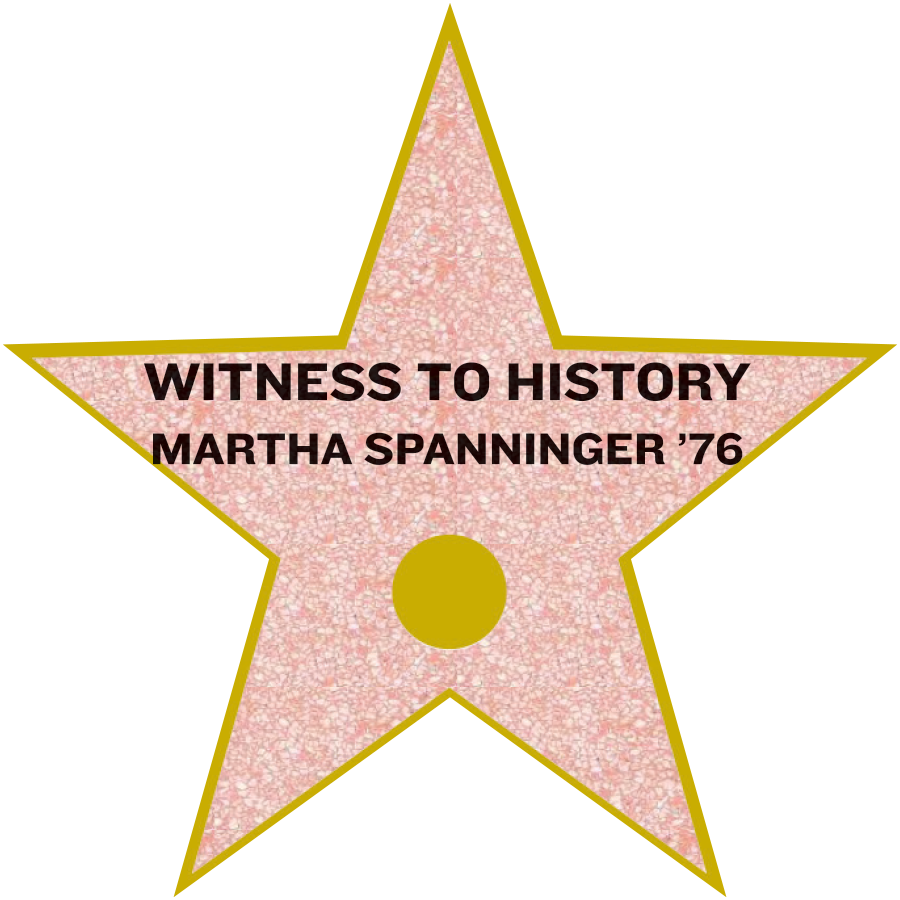
Witness to History MARTHA SPANNINGER ’76
Yet it almost never happened.
Fresh from Swarthmore with an English literature degree and a concentration in theater, Spanninger moved to New York in the late ’70s in hopes of making it as an actor or director.
But while directing an off-off Broadway play, she learned about a receptionist job opening at CBS News and began to question her career path.
“I really thought, oh my God, if I do this, I may never act; I may never go back to theater,” says Spanninger, a longtime supporter of the Film & Media Studies Department and a regular extern host.
Then a serendipitous meeting and conversation on the subway with Swarthmore friend — the actor and playwright Stephen Lang ’73, H’ 10 — ultimately convinced her to pursue the job at CBS. “I took the job and worked my way up at CBS News.”
In her 12 years at the network, Spanninger rose to the rank of producer, where she worked in documentary journalism and news-magazine shows, including CBS Reports and West 57th, a “younger, hipper” version of 60 Minutes starring Meredith Vieira and Steve Kroft, among other correspondents.
Later, Spanninger produced and directed a freelance project for MTV that blended her news credibility with rock ’n’ roll. Decade, which explored major events of the 1980s as narrated by rock stars, public figures, and cultural icons, won an Emmy and a Peabody Award.
After making stops at NBC, ABC, and PBS, Spanninger helped launch the Futuro Media Group, a nonprofit news organization committed to telling the diverse stories of the American experience.
Most recently, Spanninger has been producing a multipart documentary for Netflix about NBA all-star Bill Russell. Through interviews with basketball legends including Julius Erving II (Dr. J) and Magic Johnson, the project will celebrate how Russell reframed the role of the Black athlete in America. With each venture comes the opportunity to lift up voices while catering to Spanninger’s innate curiosity. “I have to become a little bit of an expert on whatever it is,” she says. “That’s what I love about it.”
“To get to be a witness to history and in the front row,” she adds, “I feel very lucky to have had this career.”
—ELIZABETH SLOCUM
Art and Social Impact:
David T. Linde ’82 H’20
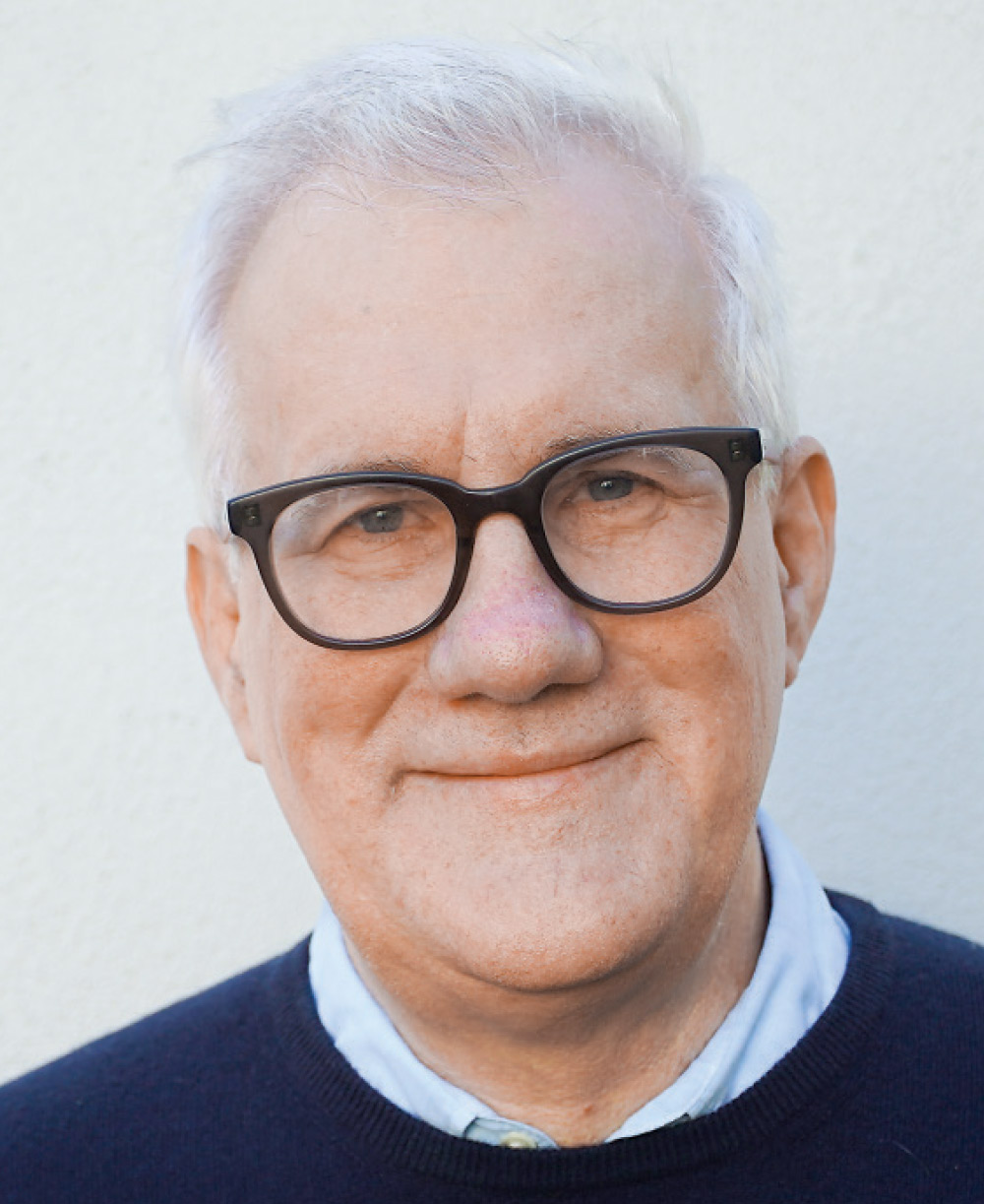
Participant’s films include perhaps the biggest blockbuster in terms of social impact ever created — An Inconvenient Truth — as well as titles like American Factory, CITIZENFOUR, Green Book, Judas and the Black Messiah, RBG, Roma, Spotlight, When They See Us, and Wonder. Participant typically identifies “impact partners” doing social change work related to issues in a given film. The company partnered with over 20 non-profit organizations for An Inconvenient Truth’s sequel. For Roma, it focused on just two — the National Domestic Workers Alliance in the U.S. and CACEH, the local organization spearheading the campaign in Mexico. Roma, directed by Alfonso Cuarón, tells the story of an indigenous woman working as a live-in maid in Mexico City. It won three Academy Awards in 2019, for Best Foreign Film, Best Directing, and Best Cinematography. After Roma came out, Mexico’s Congress passed legislation extending social security benefits and other basic labor rights to domestic workers.
“We partnered with CACEH, who was doing the work, to use the movie to amplify and bring awareness to the stories of domestic workers and the importance of recognizing their work and finding ways to make their lives more secure,” Linde says.
Linde has worked with some of the world’s most acclaimed directors, luminaries like Pedro Almodóvar and Ang Lee. He is also passionate about working with new and emerging filmmakers. “We don’t believe in making spinach. We make films about issues, but that start with an artist’s perspective and always seek to entertain,” he says.
“We partner with the greatest artists in the world; with the best distributors of motion pictures and television, and with those who are advocating on behalf of the issues on which we focus. The secret sauce is artists, distributors, impact partners, and audiences combining in a shared experience. Putting them together creates real scale and a very, very unique version of positive influence.”
— ELIZABETH REDDEN ’05


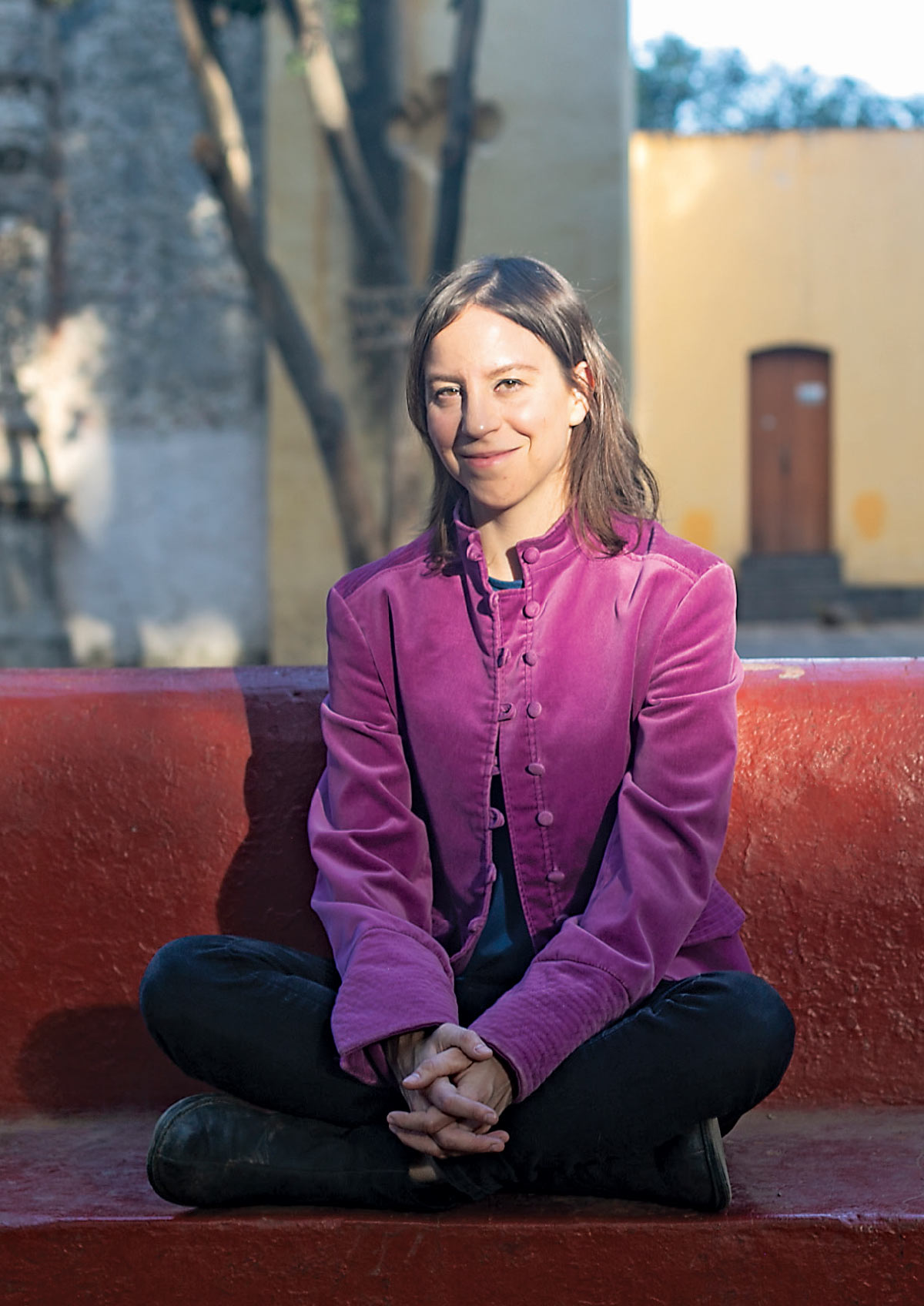
Time Traveler:
Mara Fortes ’03
Behind the scenes, carefully curating the annual slate, is Mara Fortes ’03.
Through advance screenings and visits to major film festivals including Berlin and Cannes, the Film & Media studies major watches dozens of films each year in hope of crafting the perfect program, balancing studio films and smaller international features for Telluride’s lineup.
But her goal as a curator isn’t simply to please audiences; it’s to challenge them as well.
Unlike in film reviews, in which “it’s almost as if your taste is the defining factor in whether a film is good or whether people should go see it,” says Fortes, “in programming, there are a lot of films I don’t like but I think they’re relevant and important to be shown.”
The festival itself sets the tone for selected films, says Fortes, who has also curated for the Ambulante and Morelia film festivals in Mexico. Some festivals tend toward the mainstream, others skew more experimental.
“I love films that are pushing the form in some way,” Fortes says, “taking a risk, even if it’s not perfect.”
Some of Fortes earliest memories involve visiting the cinematheque in Mexico City with her mother, a cinephile who spent much of her career working in film and cultural television. When Fortes interests started veering in a similar direction, her mother insisted she study something else before embarking on film school.
At the urging of her high school English teacher, she checked out liberal arts colleges in the United States, eventually landing at Swarthmore. Fortes developed an interest in the intersection of anthropology, history, and film —areas she’s still exploring as a doctoral candidate at the University of Chicago. While diving into film courses at the College taught by professors Patricia White and Sunka Simon, she found kindred spirits among her classmates, “a community of people who were very nerdy about film projection or indie films.”

Looking back, Fortes realizes the first program she ever curated was at Swarthmore: “This little showcase of censored films or films that were transgressive,” she says. “For some reason I just never envisioned that as a career path.”
But she’s firmly found her niche in the festival scene.
“What I’ve loved about cinema in general,” she says, “is that it’s an excuse to discover other worlds and a way to travel in time and space.”
—ELIZABETH SLOCUM

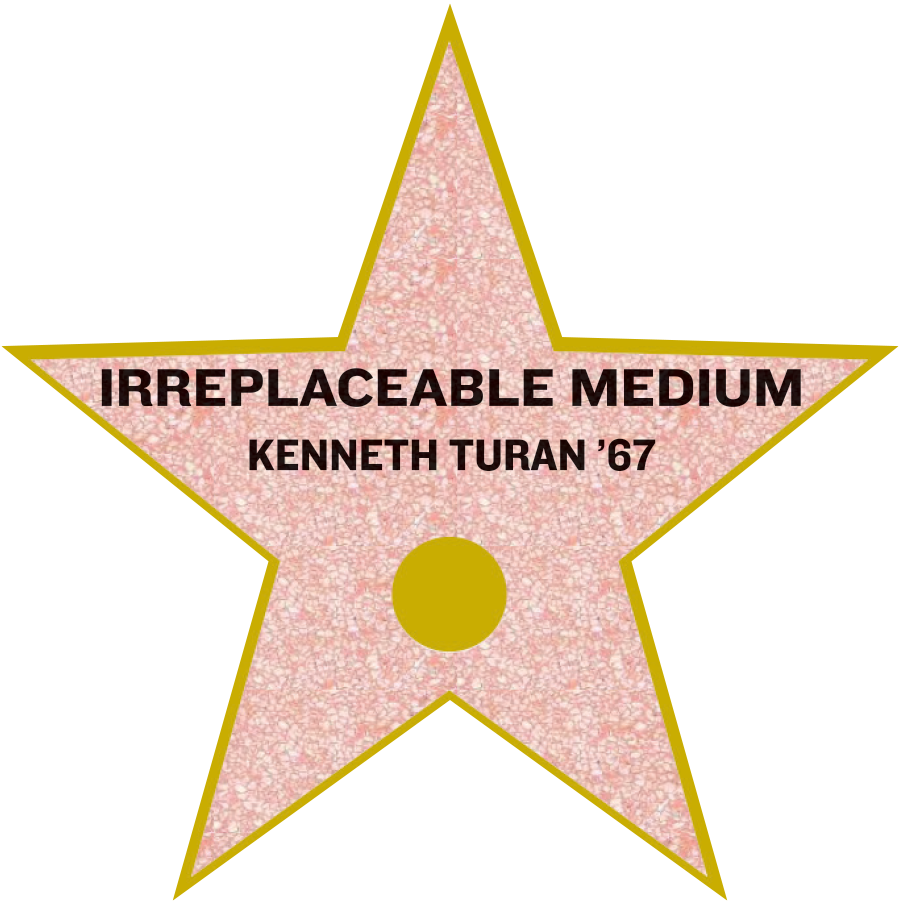
Irreplacable Medium Kenneth Turan ’67
Turan, who reviewed movies for the Los Angeles Times and still does reviews for NPR’s Morning Edition, says he enjoys seeing movies early, before the buzz distorts the view. “But I think the most satisfying thing remains when someone comes up to me and says, ‘I wouldn’t have seen that film except for your review, and I loved it.’ At its core I really do write to help viewers find films they will love — it’s that simple.”
“Swarthmore was key to my becoming a critic,” he says. His career immersed in film may have begun with a Brooklyn childhood watching TV’s Million Dollar Movie, but his cinematic education intensified at a long-gone institution called the all-college movie (held Saturday nights at Clothier, he recalls). It continues with his current project, a joint biography of MGM’s Louis B. Mayer and Irving Thalberg. Four years at The Phoenix and opportunities to help program the all-college movie series gave him invaluable experience.
Although much has shifted in the industry over the course of the pandemic, Turan is convinced that, “Manifold problems aside, movie theaters are not going away.” After not being in a theater for almost a year, Turan rented a screen near where he was living in Montana to see Christopher Nolan’s Tenet. “My wife and I, and the friend who joined us, were amazed at how much we’d missed the big screen experience.”
“Movies may not be better than ever, as the old ad line used to claim,” he says, “but they remain irreplaceable.”
— TARA SMITH

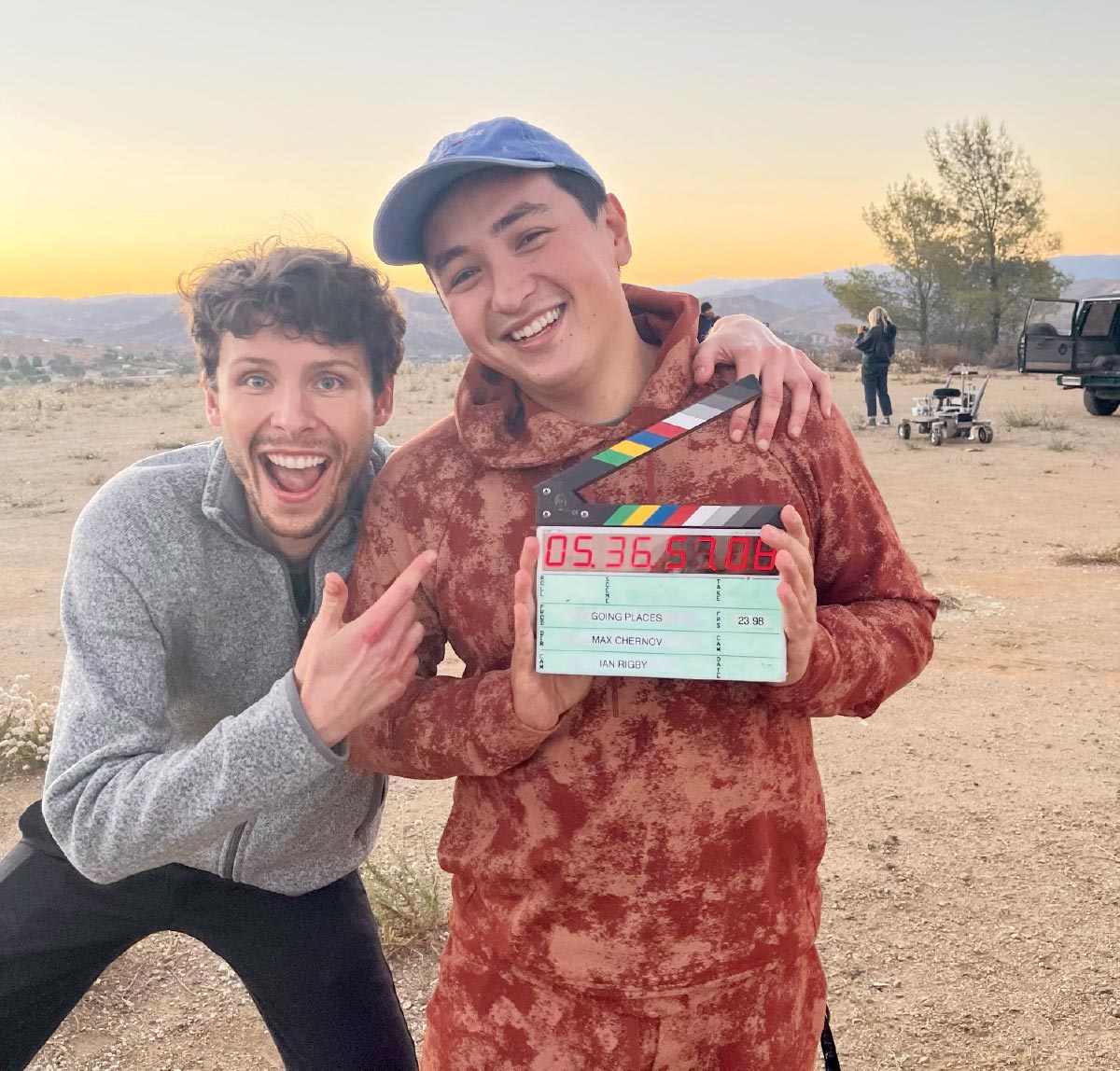
Intern to Mentor:
Grant Torre ’17
As director of development for Stampede Ventures, an independent entertainment media company, Torre focuses on finding films to produce while also developing the projects on Stampede’s slate.
It’s always tricky to explain exactly what the job is — a blend of business and creative, and a chance to draw on the analytical skills he developed at Swarthmore.
“Having to defend your thoughts — and battle it out with your classmates if you have differing views — that’s exactly what happens in a meeting here,” Torre says. “Swarthmore allowed me to summarize my taste in succinct words and be able to come to the table with something specific and compelling.”
Though he grew up outside Los Angeles, Torre never thought he’d end up with an entertainment career. After attending Discover Swarthmore in high school and applying early decision, Torre arrived planning to major in political science. Two internships the following summer, however, pointed him in a different direction: While he was miserable assisting on a California congressional election campaign, he loved working for his favorite reality show, Big Brother. That experience led to subsequent internships and production assistant jobs for the shows Catfish and The Voice.
Meanwhile, Torre began to explore courses in Film & Media Studies, which later became his major. “It allowed me to have a deeper understanding of the context and the industry,” he says.
A mailroom job at Creative Artists Agency led to a mentorship with the head of film at Warner Bros., who brought Torre on as an assistant as he founded Stampede Ventures. These days, as a regular alumni participant in Swarthmore’s Extern Program, Torre is trying to form similar relationships with the next generation of film students, who share the same worldview that he developed at Swarthmore.
“When you work in film and TV, you have to think about so many things simultaneously … the story, the characters, representation, the audience, and the context,” he says. “I think Swarthmore’s well-rounded education gave me the ability to consider these things at the same time.”
—ELIZABETH SLOCUM

The Journey is Everything:
Stephen Lang ’73 H’10
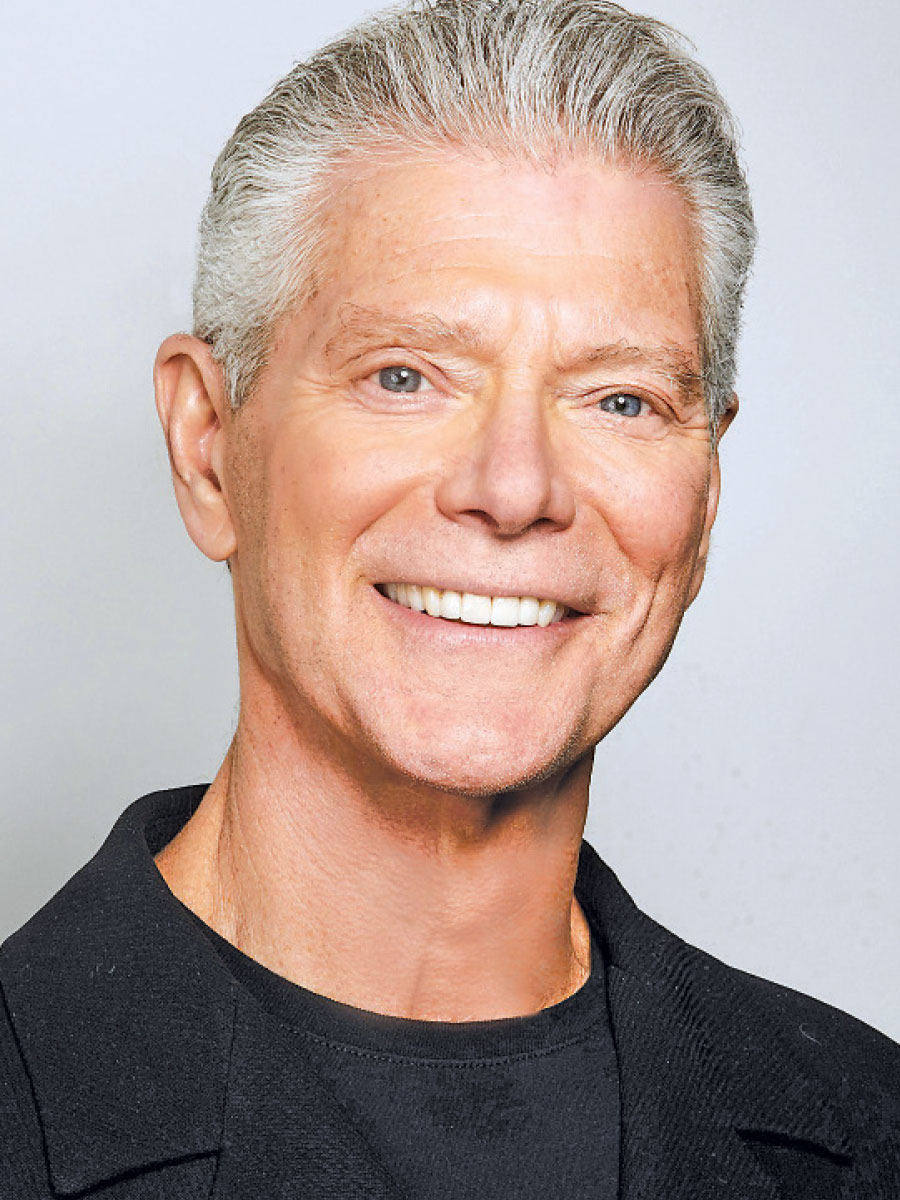

“The business is so competitive, with such an ever-growing pool of talent, that you need to keep the hunger alive,” he says. “That doesn’t mean you’re desperate or engaged in some Sisyphean task; confidence grows with experience, and both victory and failure can strengthen you. The journey is everything.” Lang has been a part of hundreds of projects, and looks back fondly on his body of work. But a few stand out, among them Tombstone and Gods and Generals, as well as Beyond Glory, which he has performed over 400 times across the world. The latter is “real old-time stuff,” he says, “pure theater, just an actor alone on a stage.” Lang is intent on keeping his mind and body sharp, and continuing to hone his craft. It’s a mindset that would also help aspiring actors, for whom Lang has two other pieces of advice. “Don’t be afraid to imitate your heroes — through imitation you’ll find your own voice,” he says. “And show up on time.”
— RYAN DOUGHERTY

Hope is Alive:
Lisa Albert ’81
“When you’ve been written out, you don’t know what you’re missing,” she says. “It’s the insidiousness of not being represented.”
In scripts for iconic television dramas including Mad Men, Divorce, and Halt and Catch Fire, Albert has helped create the kind of complex characters and storylines that have been transforming the male-dominated narrative.
The first table read for her current project, a show for Amazon based on Brian K. Vaughan’s Paper Girls, took place in a Zoom room filled with 97 people. Albert watched the on-screen grid filter down until all eyes were focused on the stars — four 12-year-old girls.
“I welled up,” she says.
Albert has witnessed many industry shifts over her career, not least over the past two years. In the middle of writing Paper Girls’ first season, she and her co-writers transitioned from an in-person writing room to Zoom. “Maybe forever,” she says, citing the cost savings for studios.
“I’m grateful this room started in real life and we knew each other as human beings.”
Online collaboration requires different muscles and rhythms. “You have to be more polite — maybe that’s a good thing,” she says with a laugh.
She loves that her job is different with every show and describes the script-writing process as the best of both worlds.
“Writers are by definition loners, so you go off and write a draft and then you have this wonderful orchestra of people to give their thoughts and help make it better.”
Although there are many marginalized voices that still aren’t being heard, “The amount of content is increasing exponentially and the opportunities are tremendously exciting,” Albert says. “My hope is everywhere.”
— TARA SMITH




Bottom: The current rear entrance to Martin will become a stunning gathering space with soaring windows, abundant natural light, and access to a screening room, studio, and black box theater.
Expanding VITAL spaces: Martin Hall
“The Computer Science faculty want to break down the cultural stereotypes about what computing is and who belongs in computing,” says Associate Professor of Computer Science Ameet Soni. “The Martin renovation supports that goal by providing spaces for collaboration, creativity, and critical inquiry.”
The project will also create new opportunities for creative collaboration across the departments.
“The conversations we’ve had have been very much about finding a mesh between our departments, and thinking together about how the humanities and technology can come together,” says Bob Rehak, associate professor and chair of Film & Media Studies.
The benefits of the project will extend across the College, positioning Martin as an interdisciplinary, technological center for all of campus. Through the renovation, the campus will also gain an outdoor arts plaza, an auditorium, and an event space to use for lectures and film screenings. Construction is scheduled to begin early in 2023.